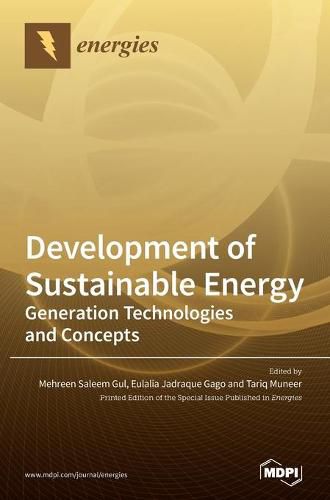Readings Newsletter
Become a Readings Member to make your shopping experience even easier.
Sign in or sign up for free!
You’re not far away from qualifying for FREE standard shipping within Australia
You’ve qualified for FREE standard shipping within Australia
The cart is loading…






This title is printed to order. This book may have been self-published. If so, we cannot guarantee the quality of the content. In the main most books will have gone through the editing process however some may not. We therefore suggest that you be aware of this before ordering this book. If in doubt check either the author or publisher’s details as we are unable to accept any returns unless they are faulty. Please contact us if you have any questions.
The book begins with an investigation of improved diesel generator flexibility and coordination via low-load diesel applications. Case studies for Australia and Hawaii are presented to conclude that low-load diesel is a natural precursor to storage due to its accessibility and also benefits low and high-penetration isolated power systems. The book continues with Structural Equation Modelling of building occupants attitude, knowledge and behaviour to propose the inclusion of motivational factors in a Building Occupant Environmental Behaviour model for sustainable building energy performance. The following section presents an analysis of different levels of renewable energy integration and energy storage to suggest the most suitable in terms of the reduction of CO2 emissions and expected earnings from a lower LCOE. Further on, a proof-of-concept heat pipe technology for passive cooling to improve the performance of photovoltaic panels in the hot climate of Oman is presented using computational fluid dynamics (CFD). The application of an uncontrolled diode rectifier-high voltage direct current transmission system for the Jeju Island power system with an off-shore new wind farm is simulated to demonstrate cost reduction and increased reliability and stability. The book concludes with view factor computations of bifacial solar photovoltaic based on the finite element method using two programming languages to demonstrate that Python offers a better platform than Microsoft Excel-Visual Basic for Applications where computation time is a significant modelling challenge.
$9.00 standard shipping within Australia
FREE standard shipping within Australia for orders over $100.00
Express & International shipping calculated at checkout
This title is printed to order. This book may have been self-published. If so, we cannot guarantee the quality of the content. In the main most books will have gone through the editing process however some may not. We therefore suggest that you be aware of this before ordering this book. If in doubt check either the author or publisher’s details as we are unable to accept any returns unless they are faulty. Please contact us if you have any questions.
The book begins with an investigation of improved diesel generator flexibility and coordination via low-load diesel applications. Case studies for Australia and Hawaii are presented to conclude that low-load diesel is a natural precursor to storage due to its accessibility and also benefits low and high-penetration isolated power systems. The book continues with Structural Equation Modelling of building occupants attitude, knowledge and behaviour to propose the inclusion of motivational factors in a Building Occupant Environmental Behaviour model for sustainable building energy performance. The following section presents an analysis of different levels of renewable energy integration and energy storage to suggest the most suitable in terms of the reduction of CO2 emissions and expected earnings from a lower LCOE. Further on, a proof-of-concept heat pipe technology for passive cooling to improve the performance of photovoltaic panels in the hot climate of Oman is presented using computational fluid dynamics (CFD). The application of an uncontrolled diode rectifier-high voltage direct current transmission system for the Jeju Island power system with an off-shore new wind farm is simulated to demonstrate cost reduction and increased reliability and stability. The book concludes with view factor computations of bifacial solar photovoltaic based on the finite element method using two programming languages to demonstrate that Python offers a better platform than Microsoft Excel-Visual Basic for Applications where computation time is a significant modelling challenge.